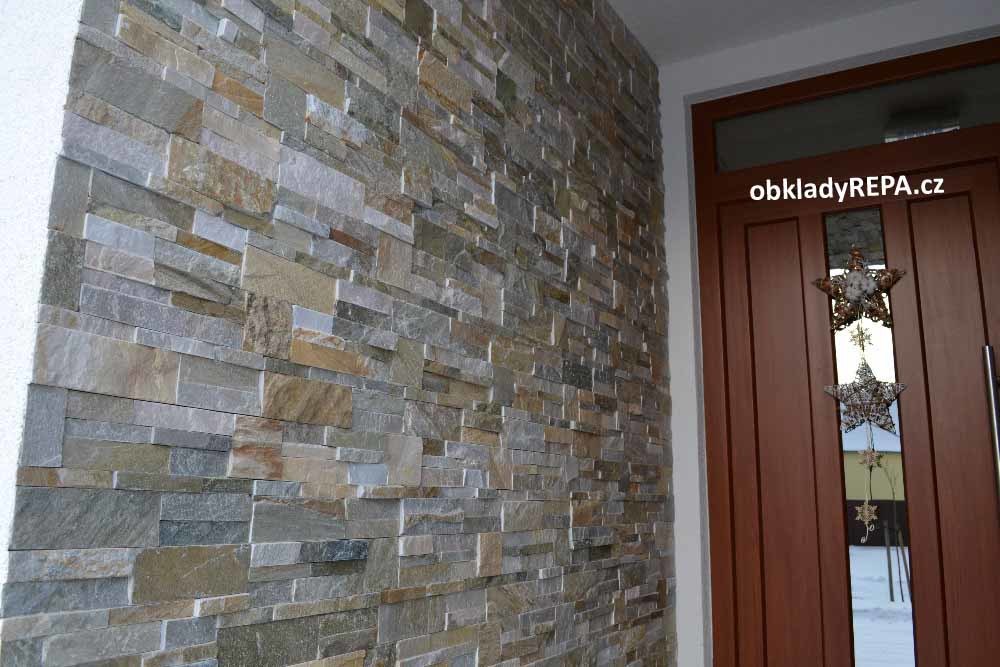Stone on the facade? A trend of the time!

Whether you are building a new house or you are about to revitalize the facade of your old house, you are probably looking for inspiration to make the facade special, different, changed in some way… A variety of tiling could serve you as an alternative to standard coloured plasters. In our country it is mainly wooden and stone tiles that play the leading role. However, if you do not want to climb the ladder every five years to provide the wood with a new coat, maybe stone cladding will be what you are looking for.
Well, one stone is not the same as another. As soon as you start to browse websites of all kinds of stone tile sellers, you may find out that the one made of slate is, actually, made of concrete. This is because stone tiles can be divided into real ones, made of natural quarry stone, and imitations, which are actually made of concrete trying to imitate natural stone.
But why would anyone use imitation of stone when they can buy real stone tiles? The reason is that concrete tiles are usually more affordable (but not necessarily) and especially their shade and structural diversity on the market is much wider than those of natural stone. Simply, a manufacturer of artificial stone decides what colour the cladding should have and then paints it artificially, while a miner of natural stone is dependent on the colour of mined stone from the quarry.
Although natural stone tiles have a limited range of colours and shape variations, it can certainly be said that even if the concrete imitation of stone is really well-processed, it can never reach the parametres and uniqueness of natural stone. Basically, every centimetre of a real stone tile is different – just as nature itself designed it. We can admire beautiful veins in marble and glittering mica in quartzite tiles. Anyone who once tries the stone cladding is very unlikely to choose an imitation next time.
When choosing a cladding, it is necessary to keep in mind both the aesthetic aspect of the matter and the technical parametres. These are mainly the thickness of the stone, the weight or size of the panel. Obviously, when installing on an insulated facade, you probably choose a cladding with the lowest possible weight so that the base layers are loaded as little as possible. If you choose tiles with a higher weight, you have to anchor the insulation on the facade properly to make it sufficiently strong.
You may be wondering how those stone tiles are actually applied to the facade. The tiles are glued to pre-prepared and well-penetrated base with a frost-resistant flexible adhesive. Seamless tiles are pushed together and glued. Line by line, the flatness is continuously checked by a water level. Cutting and correction of particular panels are performed with a saw with a diamond blade. It is sufficient to use an ordinary angle grinder for simple operations. After finishing the work, it is advisable to treat the facade cladding with hydrophobic impregnation to protect it from harsh weather conditions. Then the stone will be less susceptible to various kinds of pollution.
And where can you find the offer of stone tiles? First, there are online shops. These are fine if you know exactly what you want. There are certainly a lot of pictures of all kinds of natural and artificial stones, but you know very well that images on the screen can be rather misleading. That is why it is worth investing some time and petrol to visit a showroom, where you can see and touch samples of all products.
Source: www.ceskestavby.cz




